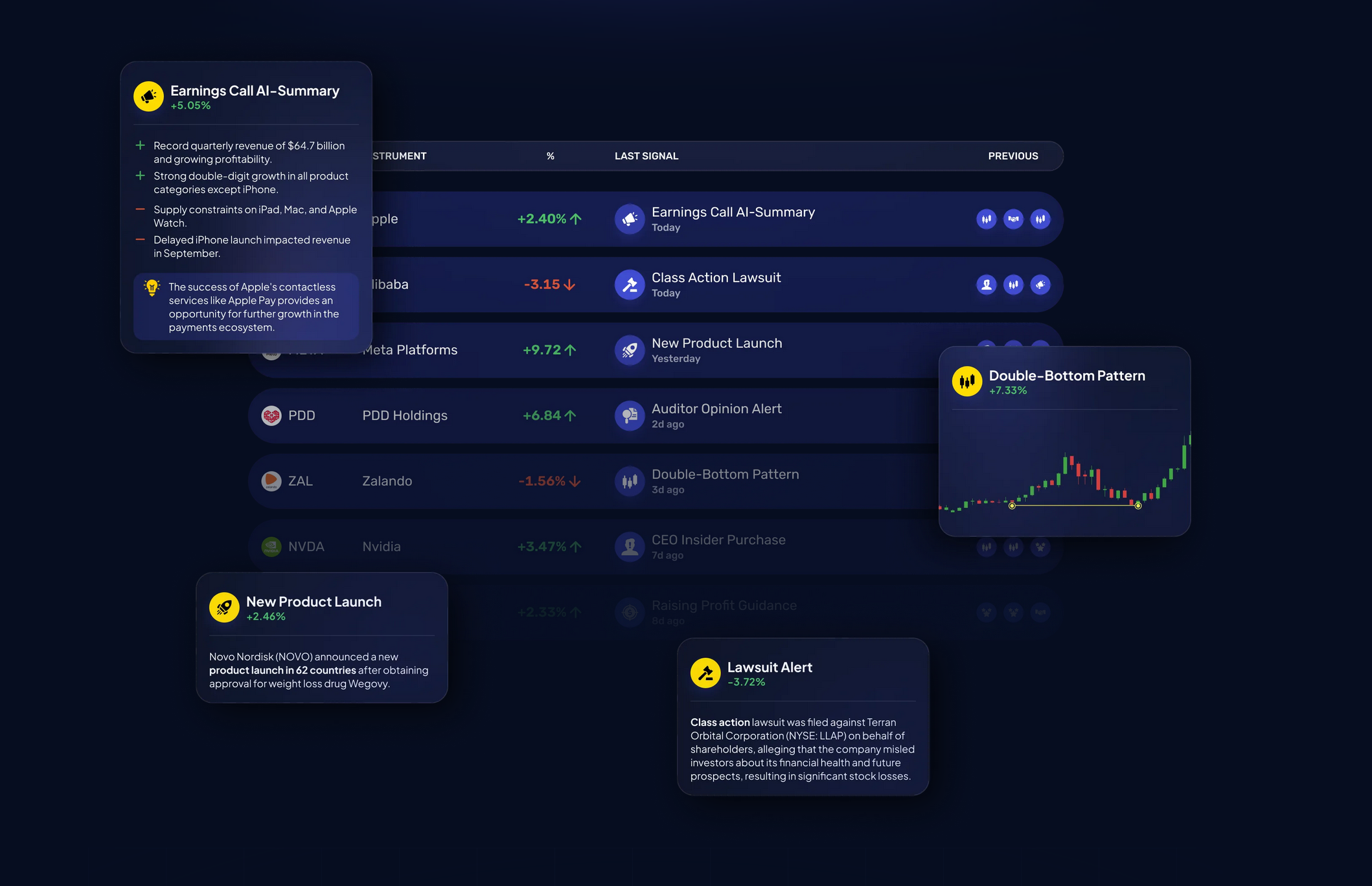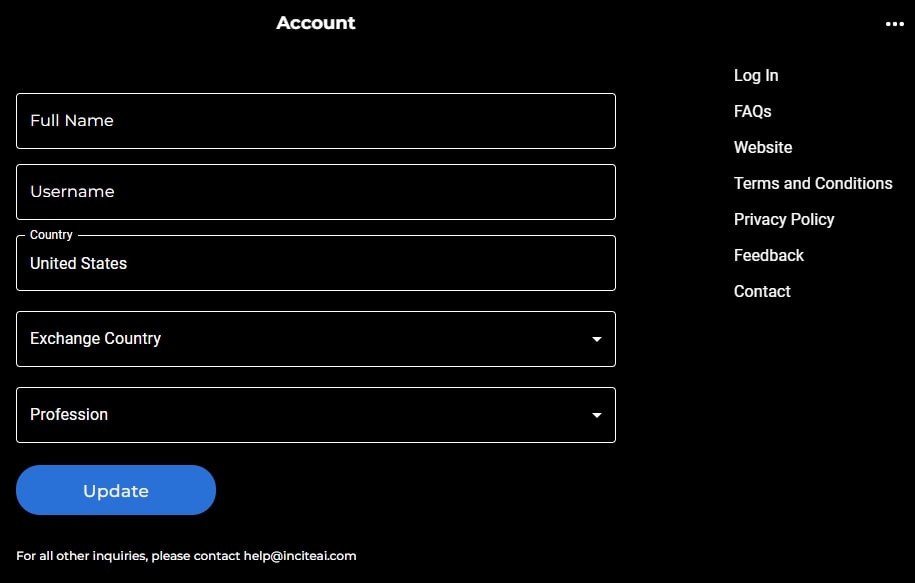20 New Ideas On Deciding On AI Stock Picker Platform Sites
20 New Ideas On Deciding On AI Stock Picker Platform Sites
Blog Article
Top 10 Tips On Assessing The Market Coverage Of Ai Platform For Predicting And Analyzing Stocks
Market coverage plays a significant role in evaluating AI software for stock prediction and analysis because it will determine the access you have to a broad variety of financial and asset markets. Platforms with a broad market coverage permit you to diversify your portfolio and explore opportunities across the globe and can also be adapted to a variety of trading strategies. Here are 10 tips for evaluating the coverage of the platforms.
1. Evaluate Supported Asset Classes
Stocks: Make sure that the platform contains stocks from all the major stock exchanges, such as NYSE, NASDAQ and LSE.
ETFs. Make sure the platform has a wide selection of ETFs so you can gain exposure to a variety of.
Options and Futures: Find out whether the platform allows derivatives, such as options or futures, as well as other products that leverage.
Forex and commodities. See whether there are any forex pairings available, along with precious metals, commodities for energy, and agricultural commodities.
Cryptocurrencies: Verify if the platform is compatible with major cryptocurrencies like Bitcoin and Ethereum, and alternative coins.
2. Verify coverage in your area
Global markets. Ensure your platform covers the major global market including North America Europe Asia-Pacific and emerging countries.
Regional focus: Determine if your platform has a distinct area of focus or market that is compatible with your trading needs.
Local exchanges: Check that your platform supports local and regional exchanges relevant to your business or your plan.
3. Examine Real-Time and. Delayed Data
Real-time Market Data: The system needs to provide real-time trading data to allow for rapid decision-making.
Delayed Data: See whether the delayed data could be accessed at no cost or at the cost of. They could be enough for long-term investors.
Data latency. Find out how your platform can reduce latency in real-time data feeds.
4. Review Historical Data Available
Depth of historical data: Ensure the platform offers extensive historical data (e.g., 10+ years) to backtest and analyze.
Examine the detail of historical data.
Corporate actions: Check to determine if the data has been accounted for prior to. Dividends, stock splits, and all other corporate actions should be included.
5. Examine the market depth as well as the order book details
Platform should provide Level 2 Data (order-book depth) to enhance price discovery and execution.
Bid-ask Spreads: Ensure that the platform shows live spreads between bid and ask for accurate pricing.
Volume data: Make sure that the platform provides comprehensive volume data to study market liquidity.
6. Examine the coverage of Indices Sectors
Major indices: Make sure that the platform has major indices for benchmarking, index-based strategies and other reasons (e.g. S&P 500, NASDAQ 100, FTSE 100).
Specific data for a specific sector for targeted analysis look into whether the platform provides information on a specific industry (e.g. technology, healthcare or energy).
Customized indexes. Find out if the platform permits you to create and track custom indexes on the criteria you define.
7. Assess the impact of integration with News and Sentiment
News feeds : Make sure you use a platform that incorporates live news feeds, particularly from reputable media outlets (e.g. Bloomberg and Reuters) for the most significant market occasions.
Sentiment analysis Check to see if your platform has sentiment analysis tools that utilize information from social media, news sources, or any other sources of data.
Event-driven Strategies: Verify whether the platform can support strategies that are triggered by events (e.g. economic reports and earnings announcements).
8. Make sure you have Multi-Market Trading Capabilities
Cross-market trade: Make sure the platform allows for trading across asset and market categories using a common interface.
Currency conversion: Find out if your platform supports multiple-currency trading and automatic currency conversion.
Support for time zones: Check whether the trading platform you are using is compatible with different timezones for markets across the globe.
9. Check out alternative data sources
Alternative data: To gain unique insights, check if the platform is able to incorporate different sources of data.
ESG data - Check that the platform provides environmental, social, and governance information (ESG). This is important for an investment that is socially conscious.
Macroeconomic data: Make sure that the platform has macroeconomic data (e.g. inflation, GDP) to perform fundamental analysis.
Review user feedback and market reputation
User reviews: Read user feedback in order to determine the platform's market coverage Usability, reliability, and coverage.
Industry reputation: See whether the platform has been praised as a market leader by industry experts or awards.
Testimonials and case studies These will demonstrate the platform's performance in certain markets or classes of assets.
Bonus Tips
Trial period: Try a free trial or demo to test the market coverage and data quality.
API access: Ensure that the API of the platform permits you to programmatically access market data for a custom analysis.
Support for customers: Ensure that the platform provides support for any queries relating to data or markets.
Check these points to determine the market coverage provided by AI stock trading platforms. Choose a platform with access to the market, data and tools that you need to be successful in trading. A comprehensive market coverage allows you to diversify and expand your portfolio. It also allows you to adjust to changes in the market. Read the most popular investing ai recommendations for site advice including best ai stock trading bot free, ai investing platform, investing ai, investment ai, ai for trading, ai trading tools, investing ai, ai trading, investing ai, chart ai trading assistant and more.
Top 10 Suggestions For Evaluating The Social And Community Capabilities Of Ai Stock Trading Platforms
To better know how users interact, share and learn it is essential to assess the social and community aspects of AI-driven stock trading platforms. These features are a great method to improve users' experience and provide invaluable support. Here are 10 top tips for evaluating social and community features available on these platforms.
1. Active User Community
Tip - Check whether the platform is backed by a community of users who are active in participating in regular discussions, sharing their insights and feedback.
Why: An active user community represents a lively community where users can exchange knowledge and learn together.
2. Discussion forums and boards
TIP: Evaluate the quality and level of activity on message boards or forums.
Forums are a forum for users to ask and respond to questions, share strategies and discuss market trends.
3. Social Media Integration
TIP: Check if the platform you are using allows users to share information and updates via social media platforms, for example, Twitter or LinkedIn.
Why social media integration can boost engagement and give real time market updates.
4. User-Generated Content
Find features like the ability to write and share content.
The reason: User-generated content promotes an environment of collaboration and offers many perspectives.
5. Expert Contributions
Tips - Make sure the platform includes contributions from experts in the industry, such as market analysts or AI specialists.
Why? Expert opinions add depth and credibility to community discussions.
6. Chat in real-time and Messaging
Examine if there are instant messaging or chat functions that let users communicate immediately.
The reason: Real-time communications facilitate quick information exchange and collaboration.
7. Community Moderation Support
Tips: Evaluate the degree of moderation and support provided within the community (e.g. moderators and moderators as well as support staff, etc.).
What's the reason? Effective moderating will ensure that a friendly and welcoming atmosphere is maintained. the support of users can resolve issues fast.
8. Webinars and events
Tip Check whether the platform has live Q&As with experts or hosts webinars.
The reason: These events provide the perfect opportunity to study and meet directly with professionals from the industry.
9. User Reviews
Check out platforms that let users post reviews or provide feedback on their community features and platform.
The reason: User feedback helps determine strengths and areas for improvement.
10. Gamification of Rewards
Tip - Check to see whether your platform supports the ability to gamify (e.g. badges, leaderboards) or rewards provided to those who participate.
Gamification is an effective way to increase engagement of users in the online community.
Bonus Tip: Security and Privacy
To ensure the security of data users as well as their activities, ensure that social and community features are secured by strong security and privacy measures.
If you take the time to thoroughly review these aspects and evaluating these aspects, you can decide if you think the AI stock prediction and trading platform has an active and friendly community that can enhance your trading experience and knowledge. Check out the top rated I loved this about stock trading ai for website advice including ai stock predictions, ai stock trader, ai stock prediction, stock trading ai, stock trading ai, can ai predict stock market, best ai trading platform, ai copyright signals, ai stock investing, best ai trading platform and more.